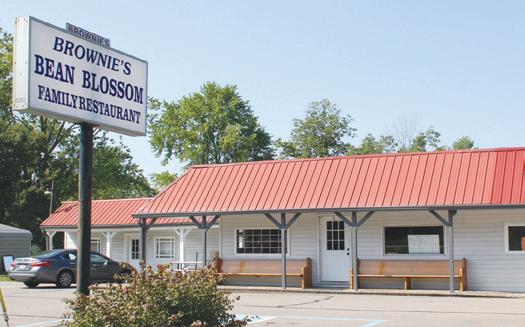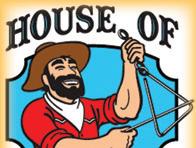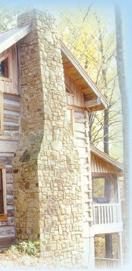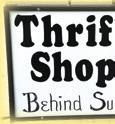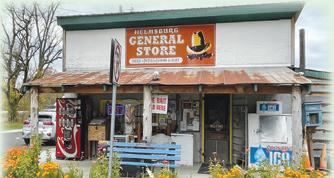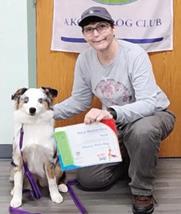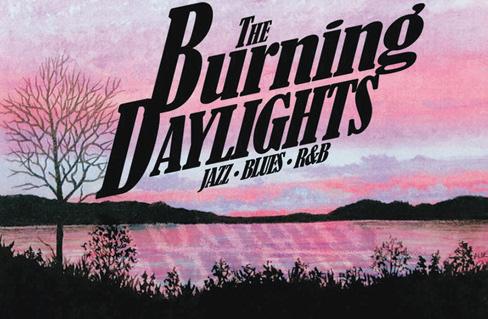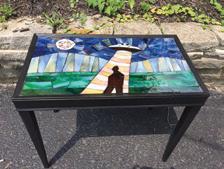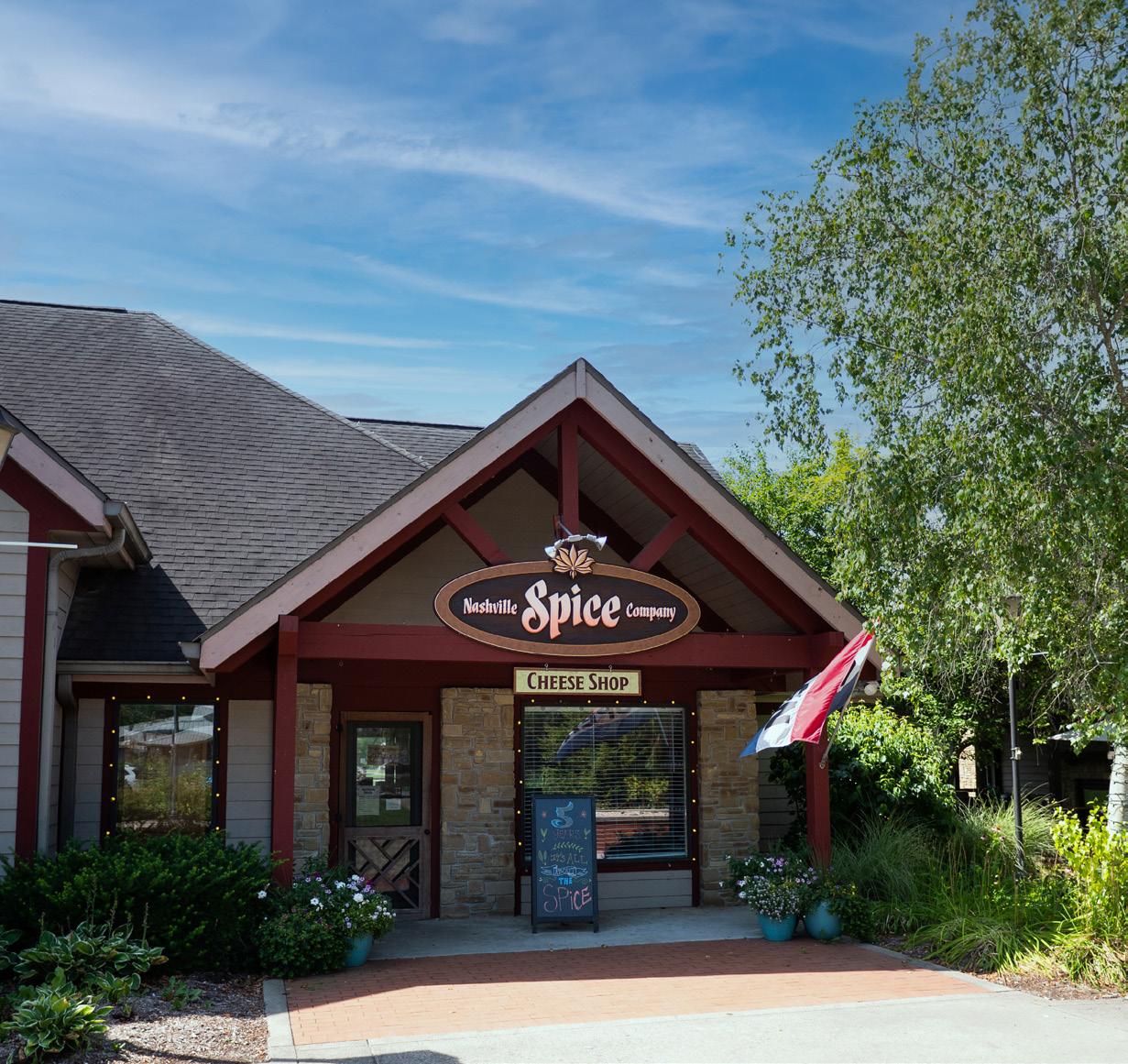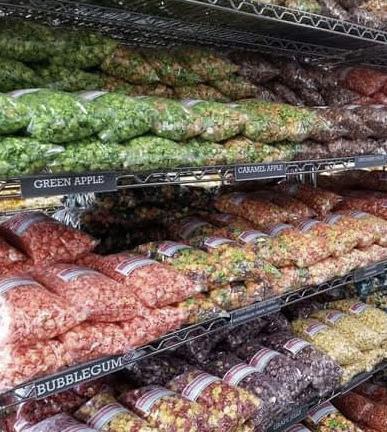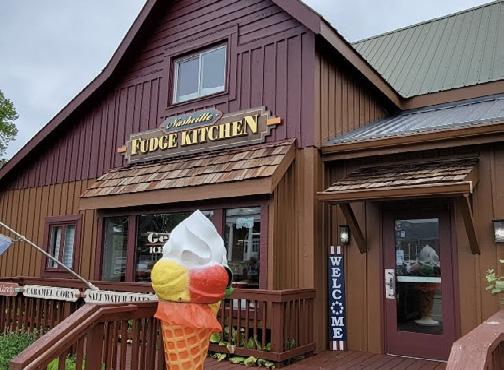
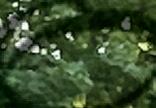































For a delicious spring salad vinaigrette combine our Basil Infused Olive Oil with our Strawberry Balsamic in a jar. Add honey, dijon mustard, garlic, salt or pepper, if desired. Shake until fully emulsified. The standard ratio for vinaigrettes is three parts oil to one part balsamic.


We’ve been bringing great taste to you since 2012 from our inviting little shop in the heart of Brown County, Indiana.
We have curated a flavorful collection for your tasting pleasure with plenty to offer for foodies, the experienced cook, or the novice. It goes well beyond the high-quality olive oils and balsamics we built our reputation on. We’ve added jams, pastas, dipping oils, salsas, sauces, and much more. Come in for a tour of tastes and let us be your guide. You’ll be wild about our shop. Shop us online from anywhere, anytime at www.thewildolive.com

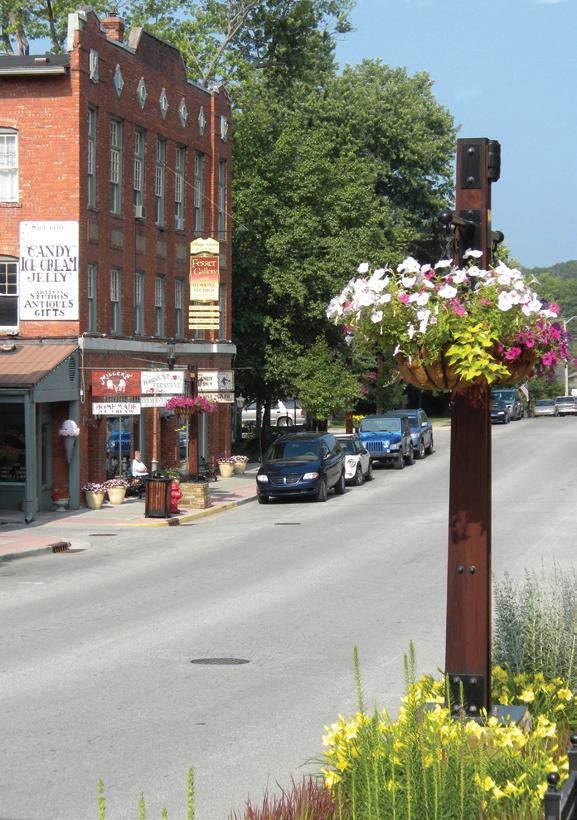



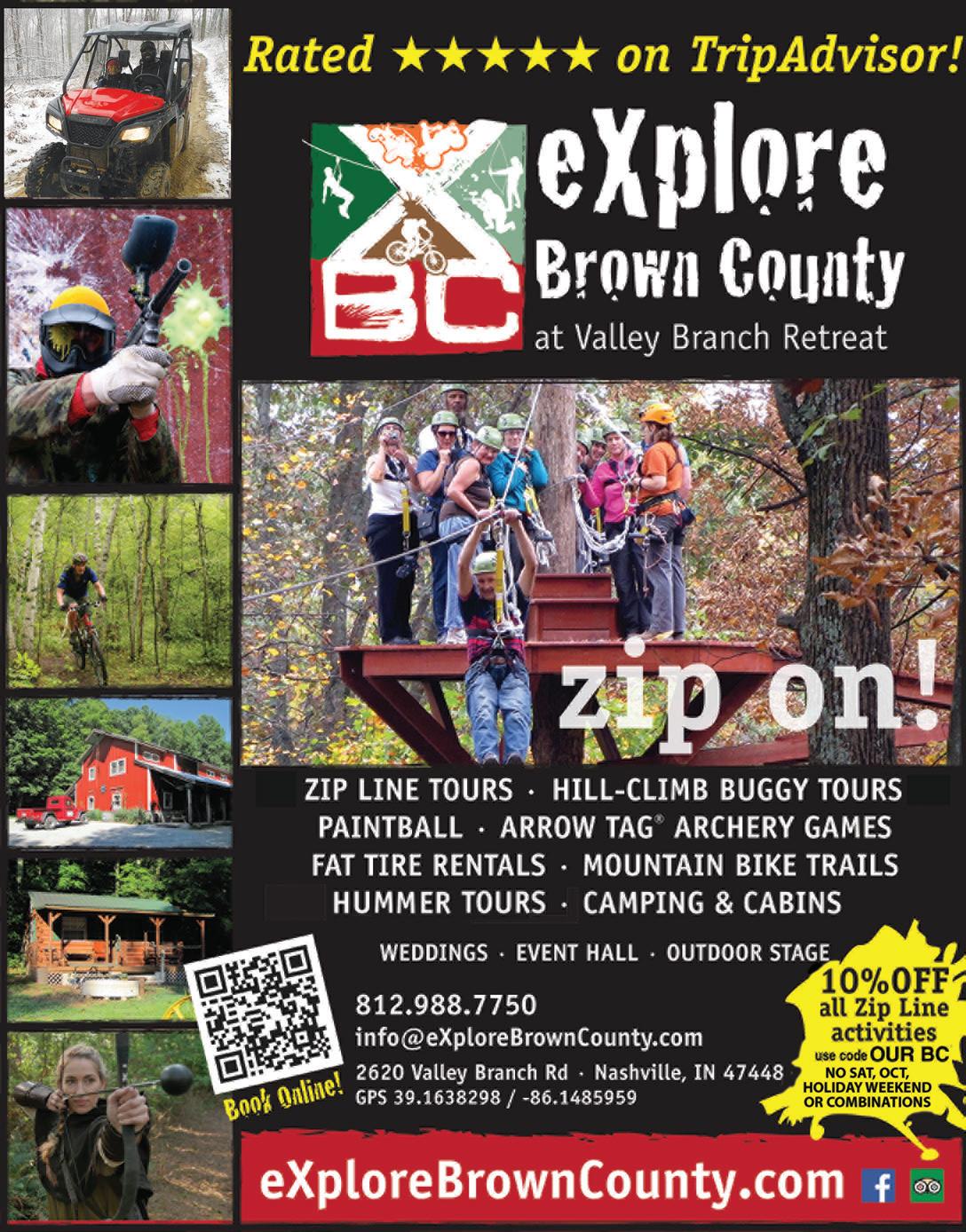


























12 HISTORY MYSTERY
13 SUBSCRIBE
16 C&C Equipment/Touch-A-Truck ~by Bob Gustin
24 Sampler: Firebird Tap House
30 Musings: Food Ways ~by Mark Blackwell
34 IHA Exhibition and Sale ~by Paige Langenderfer
38-39 Photos by Jeff Danielson*
40-42 CALENDAR
46 Psi Iota Xi ~by Amy Huffman Oliver
50 Bill Monroe Festivals Preview ~by Boris Ladwig
56 Hilltop Camp for Girls ~by Julia Pearson
64 Field Notes: A Plant Journey ~by Jim Eagleman
68-70 INFO PAGES

Jeff Tryon is a former news editor of The Brown County Democrat, and a former regional reporter for The Republic. Born and raised in Brown County, he currently lives with his wife, Sue, in a log cabin on the edge of Brown County State Park. He is a Baptist minister.

Joe Lee is an illustrator and writer. He is the author of Forgiveness: The Eva Kor Story, The History of Clowns for Beginners, and Dante for Beginners. He is an editorial cartoonist for the Bloomington Herald-Times, a graduate of Ringling Brothers, Barnum & Bailey Clown College, and a veteran circus performer.

Julia Pearson loves learning and writing about local history, faith communities, and the radically ordinary lives of people. She continues the work and association of her late husband, Bruce L. Pearson, with the Wyandotte and Delaware tribes, and visits museums of all types and sizes.

Cover: Otto & The Moaners at Hippy Hill Americana Bean Jamboree
~by Cindy SteeleOUR BROWN COUNTY P.O. Box 157
Helmsburg, IN 47435
(812) 988-8807
ourbrown@bluemarble.net
ourbrowncounty.com
Also online at issuu.com/ourbrowncounty Facebook OUR BROWN COUNTY
Jim Eagleman is a 40-year veteran naturalist with the IN DNR. In retirement, he is now a consultant. His program “Nature Ramblings” can be heard on WFHB radio, the Brown County Hour. He serves on the Sycamore Land Trust board. He enjoys reading, hiking, music, and birding. Jim and his wife Kay have lived here for more than 40 years.

Boris Ladwig is a Columbusbased journalist who has worked in print, online and TV media in Indiana and Kentucky and has won awards for features, news, business, non-deadline news, First Amendment/community affairs and investigative reporting.
*Jeff Danielson spent most of his childhood in Wales, Britain, and Scotland after his family moved there from Philadelphia. He attended IU in Bloomington then owned and operated the Runcible Spoon Café for 25 years until he sold it in 2001. He has since become immersed in nature photography. He and his wife D’Arcy live on the Brown County/Monroe County line.

Mark Blackwell no longer makes his home in Brown County where “the roadway is rough and the slopes are seamed with ravines” He now resides within sight of the sixth green of an undisclosed golf course. He was born in the middle of the last century and still spends considerable time there.

Bob Gustin worked as a reporter, photographer, managing editor, and editor for daily newspapers in Colorado, Nebraska, and Indiana before retiring in 2011. He and his wife, Chris, operate Homestead Weaving Studio. She does the weaving while he gives studio tours, builds small looms, and expands his book and record collections.

Paige Langenderfer is a freelance writer and consultant. She earned her bachelor’s degree in Journalism from Indiana University and her master’s degree in Public Relations Management from IUPUI. Paige lives in Columbus with her husband and daughters.

Amy Huffman Oliver has lived in and around Brown County most of her life and raised two kids here with her husband, Jim. She grew up with “newspaper in her blood” by way of her parents, Jane and Stu Huffman, who were both local journalists. She writes now as a freelancer after working most of her career as a public interest attorney and a seventhgrade teacher in Brown County Schools.

Cindy Steele is the publisher and editor of this magazine. She sells and designs ads, sometimes writes, takes photos, and creates the layout. For fun, she likes to play the guitar or banjo and sing.

copyright 2024
Thanks, Mom, for making it happen!
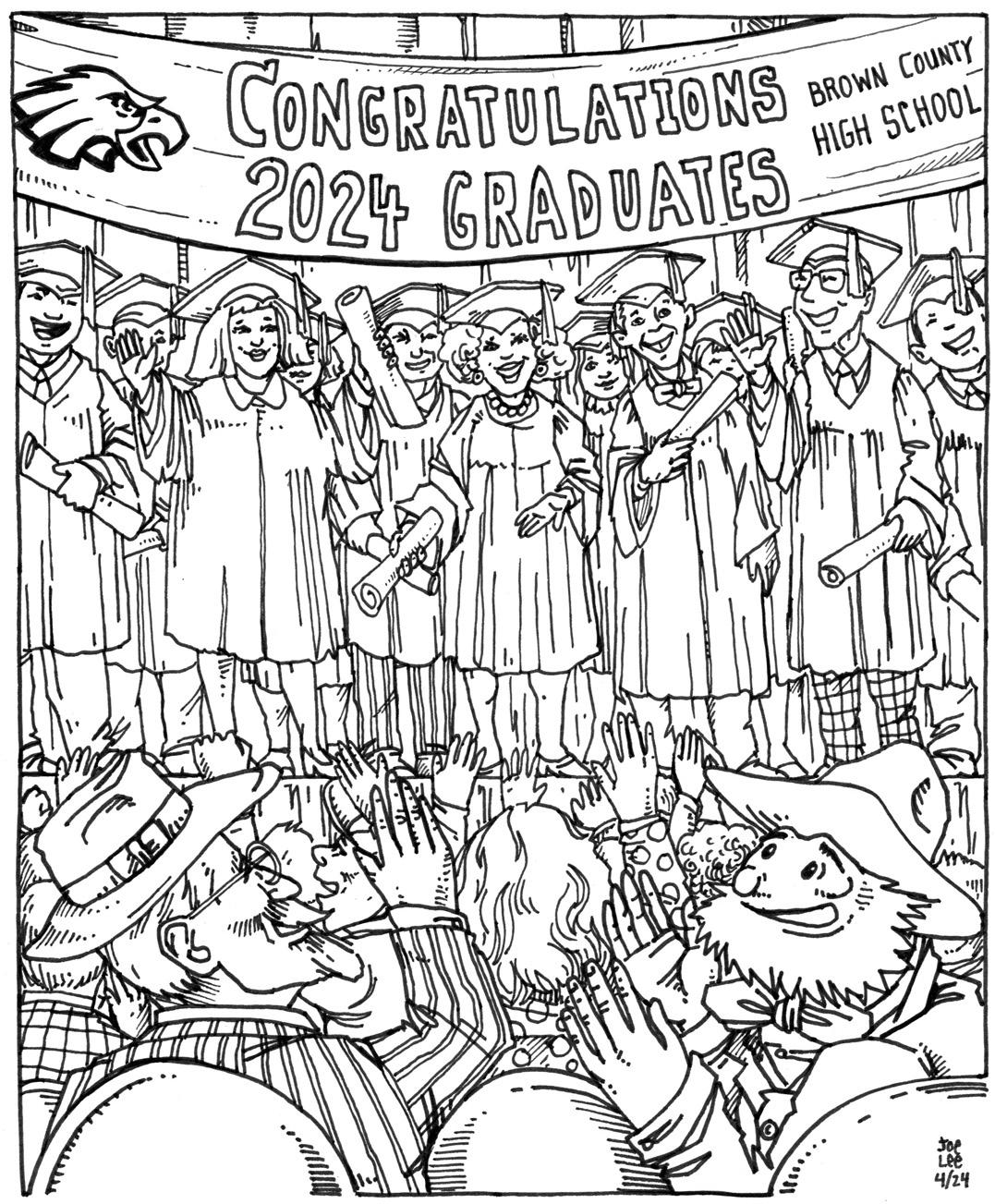
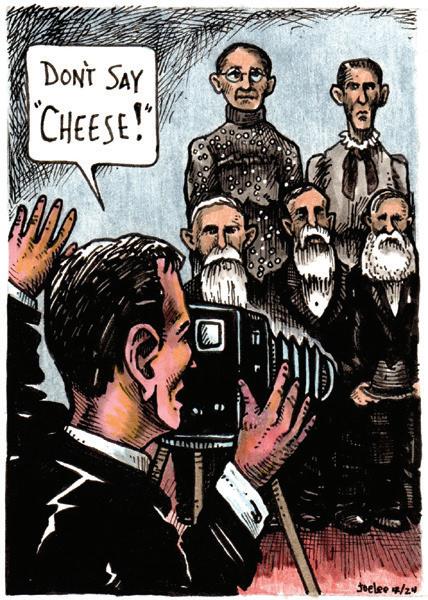
A native from the southern part of the Brown County took photos of his neighbors, their homes and businesses, and events for 40 years starting around 1900. He was an entrepreneur and made his living at many jobs over his lifetime but was able to bring in extra money with his images of family portraits, babies, baptisms, gatherings, and even the bodies of dead relatives. He also liked to take photos of horses and other animals, farm scenery, old cars, and landscapes. Who was this man?
The answer to last issue’s mystery was Bear Wallow Hill.
























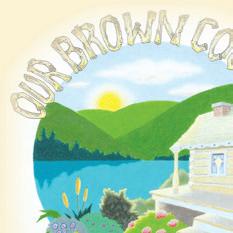



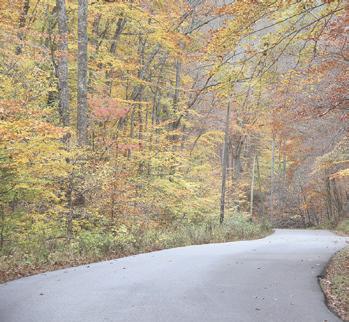







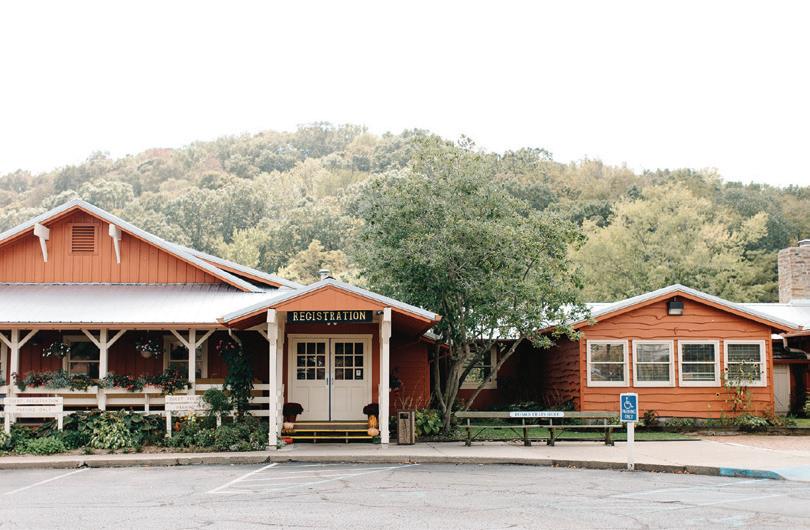




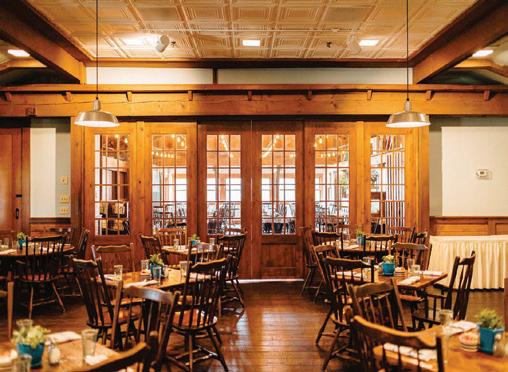
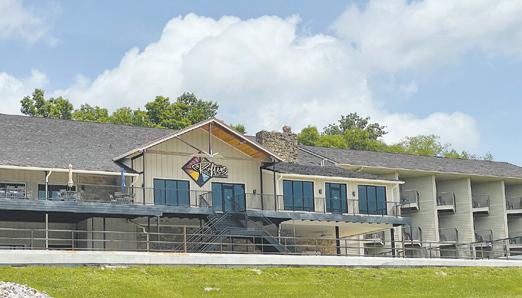
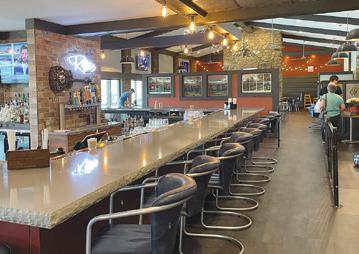
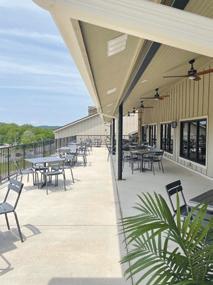
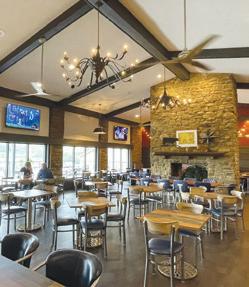

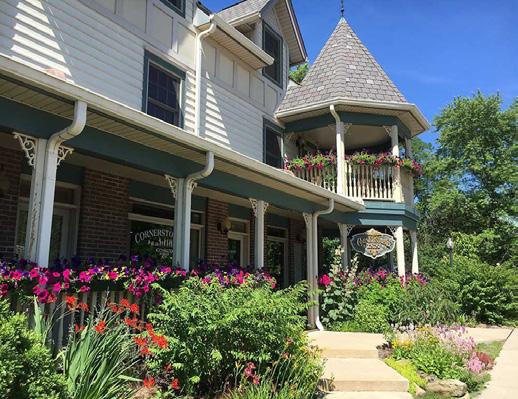
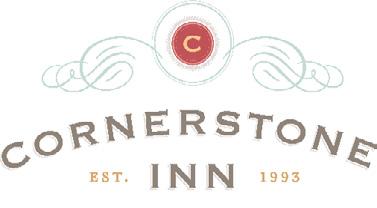
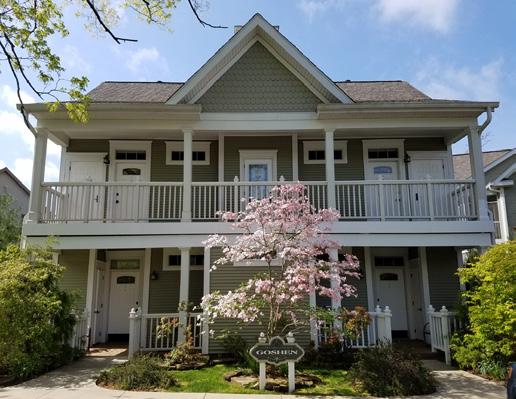

C&C Equipment has a YouTube channel that draws nearly 2 million views a month. Its owners buy, sell, and recondition heavy equipment and decommissioned military vehicles ranging up to nearly 100,000 pounds. Often, they use sophisticated equipment to make custom parts for those big units.
Their customer base stretches around the world, with only about 20 percent coming from Indiana.
One time, they bought a Ford pickup truck at a government auction only to discover it had been a “spy truck,” still loaded with computers, cameras, and other surveillance equipment. After a YouTube video showed the technology stuffed inside a camper shell, the government came calling to recover what remained of the equipment.
Among the biggest vehicles they have sold is a 96,000-pound bulldozer, 30 feet long and more
than 12 feet tall, with a blade measuring more than 13 feet wide.
It’s not a typical Brown County business. Yet it too contributes to the tourism industry, based on the number of visitors and customers who find their way to Needmore, Trevlac or other nearby spots in search of heavy equipment, then wind up shopping, eating, or spending the night in Nashville.
The headquarters for this operation is a squeaky-clean office, shop and yard tucked into northern Brown County west of Helmsburg on State Road 45.
It’s a family-style operation headed by Clinton and Bridgette Chitwood.
Inside the shop, a large CNC (computer numerical control) machine cuts custom pieces from ¾-inch steel. Spare parts are neatly organized. Smooth concrete floors are surprisingly free of dirt and grease. Outside,


rows of big excavators, cranes, military trucks and other vehicles line the flat gravel yard. Scrap metal and used motor oil are collected and recycled.
Clinton grew up a few miles away in Monroe County, on family farmland that goes back seven generations. Bridgette was raised in Lafayette, and the two met on a blind date arranged by family members. They have two sons, aged 16 and 18.
Clinton’s father was in the excavating business, so he grew up around big machines. The business was formed for construction equipment in 2004 and military machines were added in 2008.
Clinton posts about two videos a week on his YouTube channel, which he said averages about 1.8 million views a month. It’s a how-to channel with some extra features. Some of the videos show how vehicles are reconditioned. Some demonstrate what kinds of vehicles are found at auctions. Some, like the spy truck video, show Clinton and
others having a good time with unexpected finds. Others expose scammers or show viewers some of the highlights of a road trip. Humor, family, and nature are often a part of the show. A recent video highlighted the total solar eclipse.
C&C Equipment has evolved into a niche business, which includes logging and forestry equipment. It’s not a rental shop, or a place you can take your new equipment to get it fixed. Many of the big machines are purchased at auction, carefully reconditioned, and resold.
The metal shop’s CNC can handle a five-foot by 20-foot piece of steel, and Clinton is self-taught on its programming and use.
“Our business model is to keep it in-house as much as possible,” Clinton said. “We could make our business bigger, but we would lose some control.”
The Chitwoods give back to the Brown County community with financial support for several organizations, including the local fire department and the sheriff’s department. Each summer, they let kids climb into their big equipment during the annual Touch-A-Truck
C&C EQUIPMENT continued from 17
event, raising funds for the Weekend Backpack Program, which provides food to underprivileged local students.
Debbie Kelley, who is in charge of fundraising for the Backpack program, said C&C Equipment has been a regular part of the annual program as well as a regular sponsor. She said the organizers of Touch-A-Truck appreciate the unique vehicles which are part of the event,
“We want the community to thrive,” Bridgette said, adding that they donate “just because the community has been good to us.”
They enjoy the small-town feel that Brown County affords and strive to build good relationships. Bridgette said she and Clinton don’t have much time to do volunteer work but can help through monetary donations.
Bridgette calls it “being a good human,” being kind to others and helping others feel good.
“You gotta be nice to everybody,” Clinton added.
For more information: C&C Equipment, 4111 State Road 45, Nashville, IN, 47448; (812) 336-2894; <ccsurplus.com>.
June 22, 2024

A hands-on free annual event designed for family fun and to raise money to combat food insecurity in Brown County schools, Brown County Touch-A-Truck is now in its fifth year. Last year more than 1,200 people attended and about $18,000 was raised through donations and sponsorships. The main sponsors this year are Duke Energy and SCI REMC.
This year about 50 vehicles will be on display for anyone who wants to explore them.
Donations are accepted, and all money raised will go to the Brown County Weekend Backpack Program. Free books, hats and toothbrushes and toothpaste will be handed out while supplies last.
WHAT: A free event geared toward children and their families, which allows them to see, hear and touch unusual vehicles.
WHEN: 10 a.m.-1 p.m. June 22. The first hour will be a quiet time, with no loud trucks or sirens. Rain date is June 23.
WHERE: The Brown County Music Center parking lot on the east side of Nashville.
WHO: The event is organized by Tim and Debbie Kelley and Teresa Brown, members of the Brown County Weekend Backpack Program’s board of directors.
WHY: To help children understand emergency vehicles and unusual equipment, and to raise funds for the Weekend Backpack program.
THE STARS OF THE SHOW: Equipment on display is expected to include emergency vehicles from Nashville Police, Brown County Sheriff’s Office, a ladder fire truck, tanker fire truck, ambulance and military vehicles; unusual vehicles including antique trucks, a Corvette Stingray, a 1946 Willys, motorcycle with sidecar, Porsche Boxster, Indy Watson Roadster, and a NASCAR stock car; construction, transport and farm vehicles including semi tractors, backhoe, excavator, splicer truck, cement mixer, pump truck, bucket truck, skid steer, tractors, an asphalt paver, tow truck and dump truck; a public access van, school bus, and a large RV.
Brown County Weekend Backpack Program
The Weekend Backpack Program is a 501(c)(3) nonprofit organization which relies entirely on volunteers. Youth who qualify for free lunch through the Brown County school system receive a backpack filled with four healthy breakfast items, four lunch items, four dinner items and two snacks. This food may be shared with the family. For more information: <bcweekendbackpacks.org>.




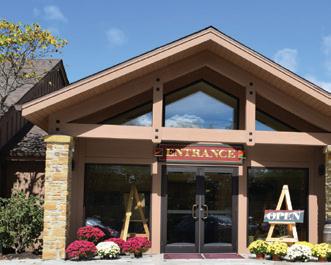

2024 Events & Exhibits
APRIL
Gallery Permanent Collection






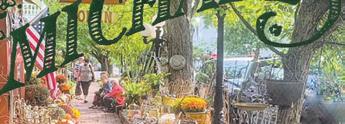

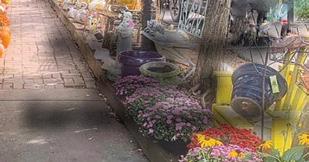



APRIL
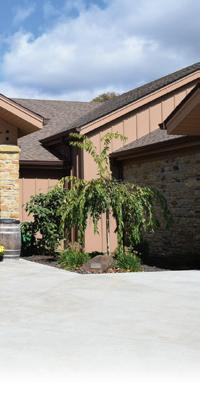
Mabel B. Annis Student Art Competition
JUNE
IHA 46th Annual Exhibition & Sale
JUNE
Painting Selma’s Garden
JUL UGUS
Indiana Printmaker’s Get Their Due Exhibit
AUGUS UGUS
Friends of T. C. Steele Member Show



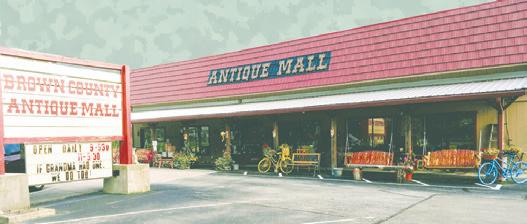




















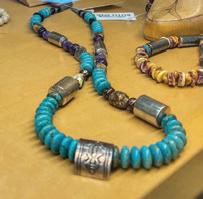


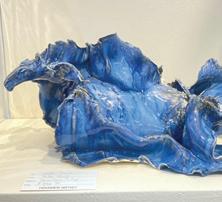


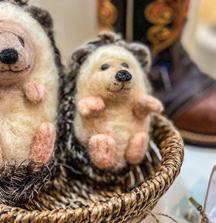
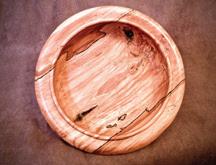


The Sampler has been keeping an alert eye on the new Firebird Tap House on State Road 46 in beautiful Gnaw Bone, Indiana, dutifully noting that the parking lot, especially on weekends, seems to be stuffed with eager patrons.
So, one recent evening, Mrs. Sampler and I dropped by the Firebird to see what the fuss is all about. As it happens, the fuss is primarily about a large selection of craft beers, Texas style barbecue, and a fun place for people to gather and enjoy each other’s company.
The first clue that a good time lies ahead comes when you see the huge industrial strength stainless steel smoker (it can hold 1,400 pounds of beef brisket) sitting just outside of the kitchen. A serious smoker for someone serious about their brisket. Second clue: upon entering, you can’t help notice big block letters on the back wall which spell out this simple message: “Drink Beer - Do Good.”
The menu is simplicity itself. The entrees are smoked brisket and pulled pork, each in quarter-pound offerings. Also, smoked and flash-fried chicken wings.
Rather have a sandwich? There are two— beef brisket and pulled pork.
For an appetizer you can choose the “Loaded Texas Tots” or its cousin the “Loaded Texas Spud.” Side dishes include French fries, onion rings, potato salad, coleslaw, mozzarella

cheese sticks, and jalapeno poppers.
We opted for the onion rings and the poppers, which turned out to have a spicy Texas twang indeed. If you weren’t craving a cold beer when they arrived at your table, you will soon be wanting one.
The Kids Menu offers chicken tenders and minicorndogs. I do like a good corn dog, but Mrs. Sampler does not like me to order from the children’s menu.
In the end, I opted for the “Cowbell Sammich” and Mrs. Sampler had the pulled pork. Both were meaty and delicious.
The 24 beers on tap include a variety of beer iterations: lagers, IPAs, ambers, stouts and sours, most infused with nitrogen.
Apparently, nitrogen is less soluble in beer than the naturally occurring carbon dioxide, leaving a bubbly and creamy mouthfeel and altering the flavor. This also creates a really creamy head on top of the beer. Carbon dioxide naturally occurs in beer and creates carbonic acid which gives beer a bitter flavor. But nitrogen neutralizes the bitterness and can make a stout taste more roasty or make sours more fruit-forward.

Casting about for something to drink with my “Cowbell Sammich” I felt like a child lost in the dark forest.
I am not a fan of the IPA’s—a little too cloying for my taste—and I’m not really a lager fan. I am drawn to the dark beers, the stouts, even the occasional porter. Accordingly, I settled on something called “Left Hand Milk Stout Nitro” brewed by an outfit from Longmont, Colorado.
Milk stouts are dark, thick ales with very low carbonation. In general, they have notes of sweetened coffee, espresso, and chocolate. Milk stouts have a subtle sweetness reminiscent of whole milk (as the name suggests) although there’s no milk involved, not since England in the early 1900s.
Touted as a “full sensory experience” it was super smooth and dark, with swirling with flavors of mocha, roastiness and…maybe vanilla?
A mesmerizing cascade of tiny nitro bubbles feeds a fulsome, pillowy head that coats the upper lip.
Profoundly satisfying!
It seems like the folks down at the Firebird Tap House are on to the burgeoning local music scene. The night we went there to eat, we saw Dave Sisson. And a couple of weeks back we went out there to see Frank Jones play and bumped into some old friends.
We couldn’t help noticing as we sat at the bar that there’s a little astro-turf, twinkle light courtyard out back, complete with picnic table and cornhole games—a nice little beer garden, once the weather gives way.
All things considered, if you like beer and you like smoked meat, you are probably going to enjoy the Firebird Tap House, located at 4040 State Highway 46, just east of Nashville. Advertised hours are 11 a.m. to 11 p.m.




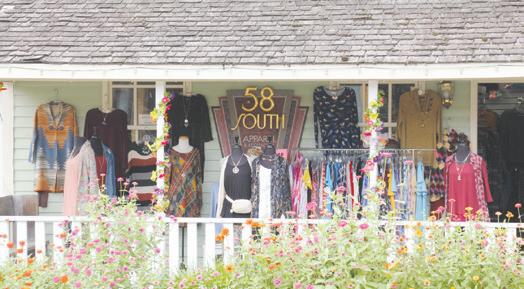






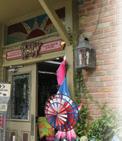













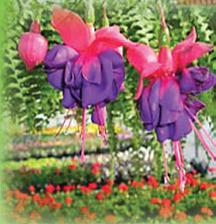









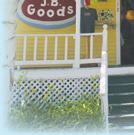
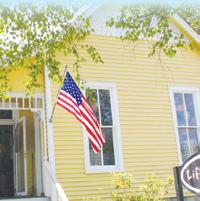




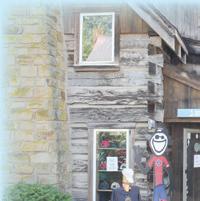
















Hoosier Buddy o ers more than 150 di erent beers, including more than 80 craft, micro, and impor ts. We proudly o er a wide variety of beers from Indiana’s nest brewers.
Hoosier Buddy is a wine -lovers type of store With more than 200 wines to choose from, we’ve got something for ever yone. Check out our “A ordable Impor ts” and “90+ Point” selections
Hoosier Buddy o ers an ever expanding array of top -notch spirits. Our whiskey categor y alone includes more than 75 di erent choices. Whether you’re look ing for a Single Barrel Bourbon or a Single Malt from Islay— we stock them.













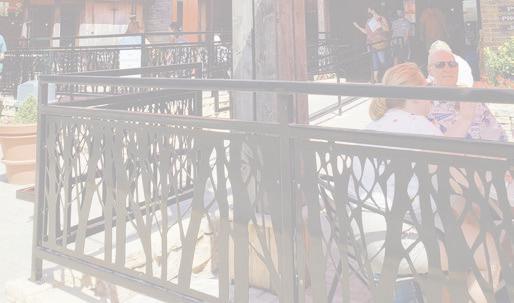

































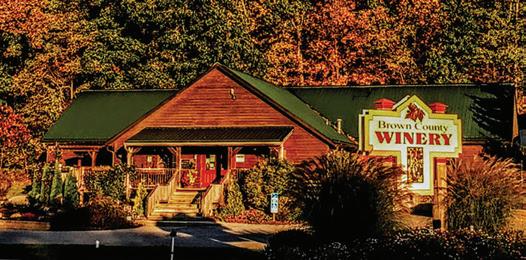



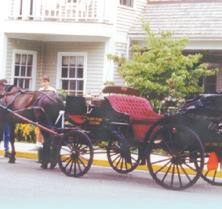






 ~by Mark Blackwell
~by Mark Blackwell
There is a character in a Mark Twain story who states,“You tell me whar a man gits his corn pone, en I’ll tell you what his ’pinions is.” There is some truth to that. Most people don’t want to jeopardize their jobs or their standing in the community by holding unpopular opinions.
For those of you who might not know, corn pone is a kind of cornbread. It starts with a batter of white corn meal, buttermilk, eggs, salt, baking powder and a little flour. It can be fried in a pan like pancakes or baked in a cast iron skillet. The notable features of the fixins are buttermilk, white corn meal, and no sugar.
I bring this up because this particular recipe is identified as southern cornbread. It’s what I grew up eating. And for quite a while, I believed that it was the only cornbread there was.
I confess to spending some of my formative years in northern Indiana and that is where I first tasted the sweet or northern variety.
This was my gastronomical awakening to the fact that there was such a thing as regional cuisines. Spending some years up north, however, did not alter my family’s core menu of foods or how they should be cooked— generally fried, overcooked, and seasoned with bacon grease.
Another thing that sparked this contemplation about food was listening to a feller on the radio telling a story about not

being able to get grits at a restaurant in the south. It was an event of such import that he interpreted it as a sign of the end-times.
Anyone who has traveled south of Louisville and stopped at any kind of eatery knows that as far as grits are concerned there are only two options: plain or cheese. None is not an option! I learned this first-hand on one of my first southern sojourns.
You do not ask about the possibility of substituting hash browns for grits. The one and only time I did was in a little greasy spoon somewhere in the south. The waitress came over and with a voice and accent that you could pour over pancakes, asked, “What can I get for you, hun?” I ordered a cup of coffee, couple of eggs over medium, with a slab of Virginia
ham. The waitress then sweetly informed me that breakfast came with grits and asked if I want plain or cheesy. That’s when I made my ignorant Yankee faux pas.
Her sweet demeanor took an immediate leave of absence and she looked at me like I had just inquired about getting an order of par-boiled horse hockey. She called over her shoulder to the cook behind the grill, saying there was somebody out here asking about hash browns. The cook didn’t even look up, he just said, “I don’t do hash browns, we got grits—both ways.”
I have been thinking about how food ways are like folk ways in that they define where we live and to some extent who we are. Which brings up the question of what makes Brown County special, food-wise?
One way to investigate what people do and why they do it is to study migration patterns; in other words, find out where they came from. Indiana has been called the northern-most southern state. And I believe it, because the preponderance of pioneers to the state were Scots-Irish who up came from the south.
You can hear echoes of the south in our hoosier twang. Photographs of Brown County folks and their homesteads, taken a century ago, are practically indistinguishable from pictures of Appalachia. And along with their accents, the early settlers brought their culinary preferences.
As soon as possible, the settlers planted gardens consisting of corn, beans, onions, and cabbages. They brought along milk cows and chickens. Apple orchards were established. Wild game and fish were abundant as well as foraged nuts, berries, and greens. There was no shortage of food but what was in short supply were those things that make food taste better. Things like pepper, spices, and especially sugar.
I figure that’s why the southern settlers worked out recipes that didn’t call for much sweetening. It was also a good way to use buttermilk. But a later wave of migration brought folks of German ancestry in from the eastern states of Pennsylvania and Ohio. And those folks brought their own food ways.
I know the first thing I think of when I think about German-American food is sauerkraut. It is easy to prepare, easy to store and pretty tasty. And the same can be said about their sausages. But what I think of most are the desserts. Apple strudel, doughnuts, and stollen—all made with sugar.
I figure maybe those were the folks who first put sugar in their cornbread. I do know that we are lucky to live here in a beautiful Brown County where we can have both kinds of cornbread or even fried biscuits. They’re all good with apple butter.


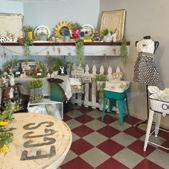










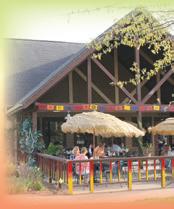





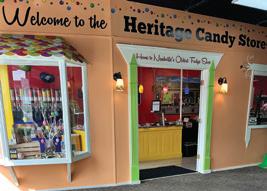





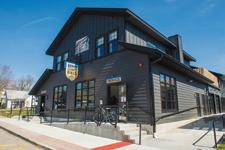

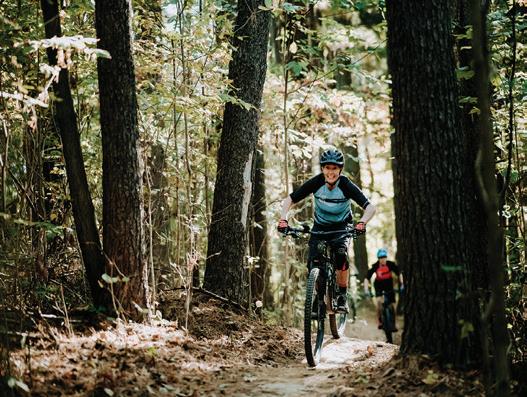


Indiana Heritage Arts will host its 46th annual art exhibition and sale June 8 through July 13.
The annual art exhibition has grown to become one of the largest juried art competitions in the Midwest. The competition is open to artists from Indiana or with a connection to Indiana. Prize money given out now surpasses $30,000.
IHA is a non-profit organization founded in 1979 by a group of Brown County artists who wanted a local exhibit featuring the style of art practiced by the artists of the early art colony, like T.C. Steele.

Painting Selma’s Garden
When: 10 a.m. to 5 p.m. June 15
Where: T.C. Steele State Historic Site
Reception: 5:30 to 8 p.m. $45 prepaid reservations required by calling Brown County Art Gallery, 812-988-4609
When: June 8 to July 13
Where: Brown County Art Gallery
Cost: Free admission
Information: indianaheritagearts.org
Opening reception: June 7.
$20 food, wine, awards presentation
“Woodson Brothers” by Phillip Erbaugh Jay Carter Memorial Directors’ Purchase Award 2023.

“Steele was a prominent impressionist style painter who found Brown County to be an ideal place to work. It had exceptional natural beauty, was an inexpensive place to live, but did have access to larger markets thanks to the arrival of the train,” said Lyn Letsinger-Miller, IHA Board vice president.
“Steele’s presence attracted many other highly trained artists who eventually came to live here and founded the Brown County Art Gallery in 1926. Nashville’s original gallery remains a thriving art center today and has a permanent collection of early Indiana art.”
Although the majority of the pieces submitted to the annual exhibition are made with oils, there are also pieces done with pastel, acrylic, and watercolor.
Unlike other exhibitions which use photographic images for judging, IHA requires the actual art to be brought to the Brown County Art Gallery for judging. Each artist can enter three paintings or prints. Each year, more than 300 pieces are entered into the competition. Every entry must be listed for sale.
Judges come from across the country and must have a strong resume. This year’s judge is Eric Jacobsen, a plein air painter from New England.
Of the hundreds of entries, the judge selects about 100 pieces that will go into the show, of which only a handful are selected as prize winners.
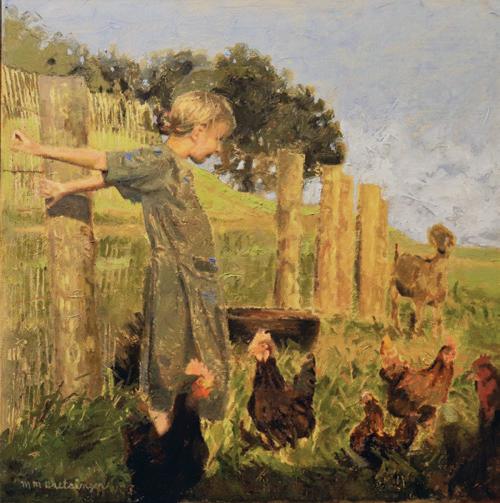
“Just making the show is a major achievement for an artist whether they win a prize or not,” Miller said.
As part of the annual exhibition and sale, IHA partners with the T.C. Steele Site for an event called Painting Selma’s Garden. IHA artists are invited to the grounds and gardens on June 15 to paint while visitors watch them work with free admission to the site. A ticketed evening reception includes food, wine and a sale of the day’s work.
Miller said she looks forward to the exhibition and the events surrounding it all year.
“It is so nice to see visitors streaming into the gallery to view and buy the work of Indiana’s top professional artists and to enjoy all of the other displays the gallery has to offer,” she said. “The IHA annual exhibition and sale is widely known. Its mission is to support the legacy of representational (Heritage) style art that has deep roots across all of Indiana.”
IHA uses commissions from the sales to provide free year-round exhibit space for IHA member artists, to support other art organizations, and to support various educational programs and student art competitions.
Admission to the gallery is free. It is open daily, from noon to 5 p.m. on Sundays and from 10 a.m. to 5 p.m. every other day.




















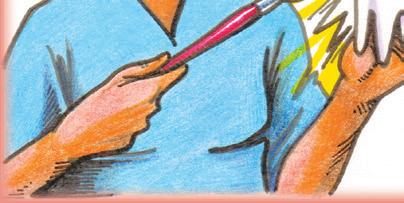


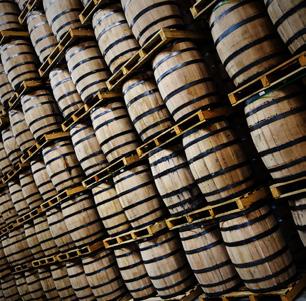
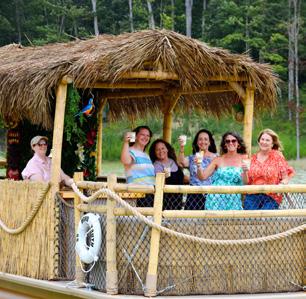



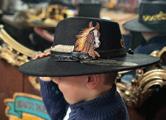

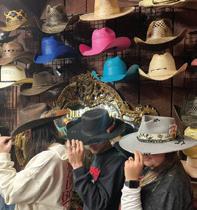


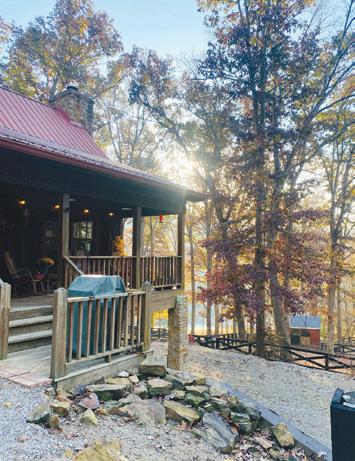

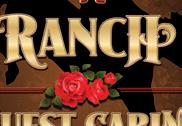



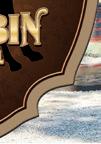



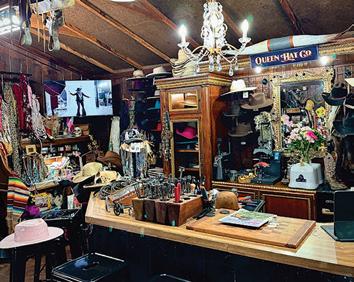
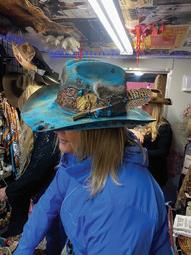
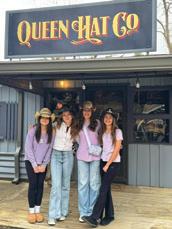


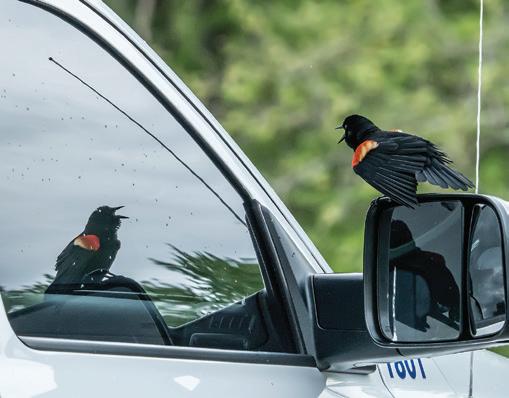
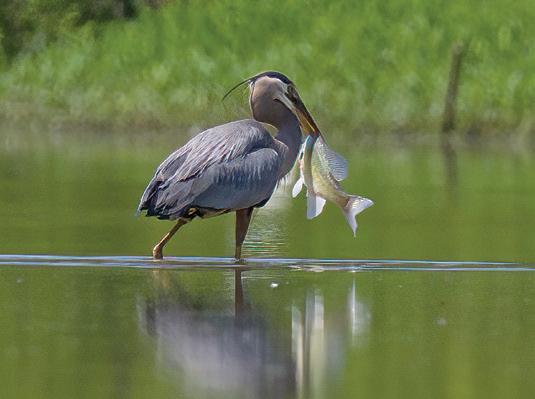

 photos by Jeff Danielson
photos by Jeff Danielson
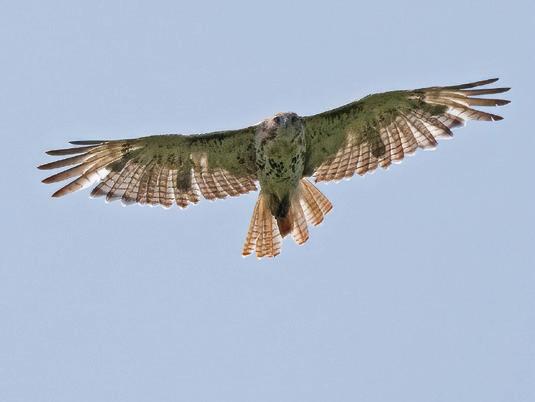

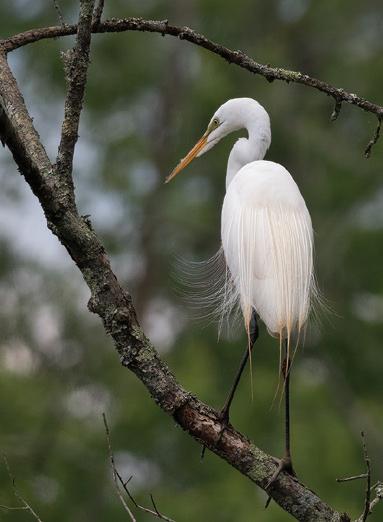

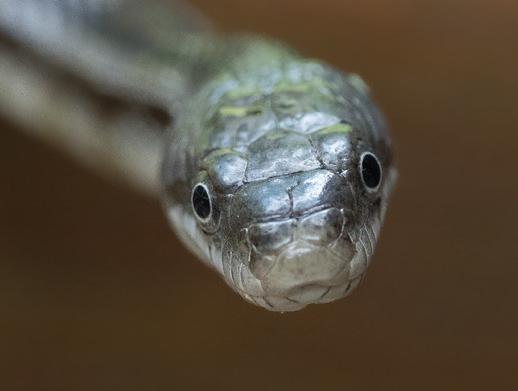
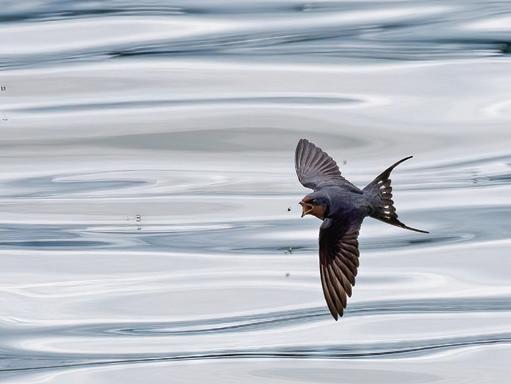
Brown County Playhouse
May 3 Carole King & James Taylor Story
May 4 The Roundups FREE
May 10 Back 2 Mac -Fleetwood Mac Tribute
May 16 Pam Tillis w/ guest Rose O’Neal
May 17 Solitary Man -Neil Diamond Tribute
May 18 Barracuda -America’s Heart Tribute
May 24 Henry Lee Summer
May 31 Cornfield Mafia -LOW DOUGH
June 7-16 The Odd Couple -Live Theatre
June 20 Kris Allen
June 21 Heartland Rock -Bob Seger & John Mellencamp Tribute
June 22 FCR LOW DOUGH SHOW
June 27 Journeyman -Eric Clapton Tribute
June 28 Blair Carman -Jerry Lee Lewis Tribute
June 29 Rising Stars Theatre Camp-noon
June 29 The Gordon Lightfoot Tribute
Most shows at 7:30
70 S. Van Buren Street 812-988-6555
www.browncountyplayhouse.org
Brown County Music Center
May 5 Steel Panther May 15 Nazareth May 18 TEDx Brown County Schools May 21 Uriah Heep + Saxon May 24 Rick Springfield June 2 John Anderson
June 16 Bachman-Turner Overdrive
June 22 Touch-A-Truck (afternoon)
June 22 Mike Campbell & Dirty Knobs
July 16 Ben Folds
July 19 Get the Led Out -Led Zeppelin Tribute
July 27 Kenny Wayne Shepherd Band 812-988-5323
www.browncountymusiccenter.com
The schedule can change. Please check before making a trip.
Submit calendar info to ourbrown@bluemarble.net
Brown County Inn
Open Mic Nights Wed. 6:00-9:00
Hill Folk Music Series Thurs. 7:00-9:00
Fri. & Sat. Live Music 8:00-11:00
May 1 Special Open Mic - Fundraiser for Jeff & Rhonda Foster
May 2 Kara Cole, Paul Bertsch, Joshua Martin
3 Bridgett Gossett
4 Andra Faye & Scott Ballantine
8 Open Mic
9 Sam “Hillbilly Uke” Anderson
10 Common Ground Trio
Paul Bertsch Band
Country Heritage Winery
& Sat. 6:00-9:00
& Jim
19th Hole Sports Bar
Fri. 7:00-10:00 | Sat. 8:00-11:00
8:00-11:00
Road 46 East 812-988-2291
Firebird Tap House
All music 7:00-9:00 and some afternoon music days noted
3
Denny
4 Kolton Norton 2:00-4:00
Sam King 7:00-9:00
9 3 Beards Strummin
10 Homemade Jam
11 Ruben Guthrie 1:00-3:00
Lindsey Flannery 7:00-9:00
17 Albert Nolting
18 Eric Hamblen
24 Travers Marks
25 Night Owl Country Band
31 Blankenship & Sharp
1 Timothy Scott
7 Ruben Guthrie
8 Stant & Moore
14 Justyn Underwood
15 Gene Fugate
21 Cotton Patch
22 Old Coyote
28 Marvin Parish
29 Nathan Dillon 4040 State Rd 46 E 812-988-2336 www.firebirdtaphouse.com
Nashville House
Music Sat. 5:00-8:00
May 4 Austin James
May 11 Achilles Tenderloin
May 18 Gene Fugate
May 25 Amanda Webb
June 1 Happy Accident/Angela Sullivan
June 8 Ben Justus
June 15 Kit Haymond
June 22 Jess Jones
June 29 Michael Staublin
15 S. Van Buren Street 812-988-4554 www.nashvillehousebc.com
Ferguson House Beer Garden
Open Mic Thurs. 5:00-8:00
Music Fri. 5:00-8:00 | Sat. 1:00-4:00 AND 5:00-8:00 | Sun. 1:00-4:00
May 2 Open Mic
May 3 Michael Staublin
May 4 Happy Accident/Angela Sullivan 1:00-4:00
Ben Justus 5:00-8:00
May 5 John Collins May 9 Open Mic
May 10 John Ryan
May 11 The Hammer & The Hatchet 1:00-4:00
May
Travers Marks 5:00-8:00
Kara Cole
Mic May
May
Rich Hardesty 1:00-4:00
Jaylen Martinez 5:00-8:00
Hernly
Sisson
Ross Benson 1:00-4:00 Cody Williams 5:00-8:00
June 1 Ruben Guthrie 1:00-4:00
Gene Fugate 5:00-8:00 June 2 Taylor Hernly
Open Mic
Staublin
James 1:00-4:00
Allie Jean 5:00-8:00
Kara Cole
Hardesty 1:00-4:00 Ben Justus 5:00-8:00
John Collins 1:00-4:00
Bertsch 5:00-8:00
Sycamore Saloon at Harmony Tree Resorts
Thurs. Saloon Stories, Open Mic, Writers’ Circle, & Live Podcast
Fri. Karaoke 8:00 | Sat. Live Music 8:00 Sun. Game Day 3:00
May 4 Steve Plessinger
May 11 Stoney Lonesome
May 18 TBD
May 25 Breanna Faith
June 1 Gary Grown
June 8, 15, 22, 29 TBD
1292 SR 135 S, Nashville 812-200-5650
www.harmonytreeresorts.com
Hard Truth Distillery Co
June 15 Whiskey Chaser Trail
Running Festival 9:00am-3:00
5K, 10K, 20K Relay, and Shot Mile
Post-race food and live music
Check website for additional info. 418 Old State Road 46 812-720-4840
www.hardtruth.com
Story Inn
Fri. Love Shack Karaoke 9:30-12:30
Sat. pianist Ted Seaman 6:00-9:00
May 4 Indiana Wine Fair noon-6:00
Sample Indiana’s finest wineries, food trucks, local farms and vendors, live music. 6404 State Road 135 812-988-2273
www.storyinn.com
Village Art Walk
Fourth Fridays, 4:00-7:00 April-October
Free self-guided walking tour of downtown Nashville art galleries. Demonstrations. Make & take activities. Wine tasting.
FB ArtsVillageBrownCounty
812-320-0872
Nashville Farmer’s Market
Justus 1:00-4:00
Fugate 5:00-8:00
Alley 78 Franklin Street
Sundays 11:00-2:00, Brown Co. Inn parking lot at State Road 135 & 46 intersection
Local produce, meats, eggs, food, arts, plants, music.
Continued on 42
CALENDAR continued from 41
Spring Blossom Parade
May 4, downtown Nashville
Sponsored by Brown Co Lions Club
Indiana Wine Fair
May 4, Story Inn, noon to 6:00 Indiana wineries, food trucks, music. 6404 State Road 135 812-988-2273 www.storyinn.com
Dawg Gone Walk & Fiesta
May 19, Deer Run Park, noon-2:30 Brown Co Human Society fundraiser www.bchumane.org
47th Shelby Spring Fling
May 17-18, Brown County State Park Car show, vendors, picnic.
Info: 812-483-1818 www.insaac.org
Free Recycling Event
May 18, Brown Co. Recycling Center
8:00am-Noon Computer & Electronics plus document shredding service Charge for TVs, monitors, & large copiers 176 Old SR 46 812-988-0140
Americana Bean Jamboree
May 30- June 1, Bill Monroe’s Music Park Headliners Jordan Rainer, Tina Adair Band 5163 N. SR 135 812-988-6422
https://billmonroemusicpark.com
War in the Woods
Wildest No Prep Race in the Country
May 31-June 1, Brown County Dragway 480 Gatesville Rd. in Bean Blossom warinthewoodsnoprep@outlook.com
317- 340-1789 War in the Woods FB
46th Indiana Heritage Arts Show and Sale
June 8-July 13, Brown Co. Art Gallery
June 7 Reception 6:00
Main St. & Artist Drive 812-988-4609
https://browncountyartgallery.org
Bill Monroe Bluegrass Fest
June 12-15, Bill Monroe’s Music Park 5163 N. SR 135 812-988-6422
https://billmonroemusicpark.com
Touch-A-Truck
June 22, Brown Co. Music Center 10:00am-1:00. Rain date June 23
Free event to help children understand vehicles and equipment, and to raise funds for the Weekend Backpack program.
Art in the Garden
Brown Co Art Guild Benefit
June 22, 5:00-8:00 Evening amidst beautiful gardens and art at a private home in Nashville. Enjoy live music, heavy hors d’oeuvres, drinks as well as Plein Air painting and demonstrations.Tour of family’s art collection rounds out the evening. A feast for all the senses. Proceeds benefit the Guild’s mission to preserve Brown Co. art colony culture. $100 per person. 812-988-6185
https://browncountyartguild.org
BrownCounty Humane Society’s annual Dawg Gone Walk and Fiesta will take place Sunday, May 19 from noon to 2:30 p.m. at Deer Run Park in Nashville. This event is a guaranteed great time for you as well as your dogs, who will go home tired after a busy afternoon.
The event kicks off with a ceremonial walk around beautiful Deer Run Park. People and dogs alike can enjoy the scenery before heading back to the event area for an afternoon of fun.
Dogs will be invited to participate in any of the 23 contests, which are free to join. Some contests allow dogs to show off their skills while others just let them enjoy lots of attention by simply being them. Categories include contests like cutest smile, best bark, biggest dog, littlest dog, best dog trick and the ever-
popular best costume contest. Dogs will also be able to run free and make new friends in the designated off-leash area.
Bobbing for Hot Dogs, Fastest Fetch, Sneaker Sniffer, and Doggie Dash are just some of the games dogs can compete in with the winner receiving a medal at the end. Each game requires one ticket to participate ($1 per ticket) and tickets will be available for purchase with cash or credit card. Back by popular demand, wristbands for purchase allowing dogs unlimited game play.
The event will conclude with an exciting ball drop ending. Participants will be able to purchase tennis balls for $5 each. At the end of the event, the balls will be dropped from a fire truck into the contest area and a shelter dog will retrieve the winning ball. If your ball is the winner, you will receive half of the proceeds from the ball sales, which
could be as large as a $625 cash prize. All funds raised go directly to supporting the homeless dogs and cats at the shelter. Not only do you get a day of fun with your dog, but you are saving a life at the same time.
Visit <www.bchumane.org/dawggone-walk-fiesta/> today to learn more and register for this year’s Dawg Gone Walk & Fiesta. Don’t wait too long to register as only the first 125 dogs registered will receive a goody bag filled with treats and surprises for humans and dogs alike.
DATE: Sunday, May 19, 2024
TIME: noon–2:30
LOCATION: Deer Run Park, Nashville
TICKETS: $25 for first dog, $20 for additional dogs through May 8 $30/$25 after May 8 and at the park. Humans get in free.


May 5 Steel Panther
May 15 Nazareth
May 18 TEDx Brown County Schools
May 21 Uriah Heep + Saxon
May 24 Rick Spring eld
June 2 John Anderson
June 16 Bachman-Turner O verdrive
June 22 Touch-A-Truck (afternoon)
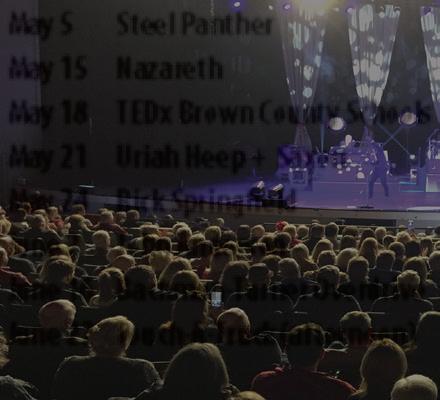



June 22 Mike Campbell & The Dir ty Knobs
July 16 Ben Folds
July 19 Get The Led O ut (Led Zeppelin tribute)
July 27 Kenny Wayne Shepherd Band
Aug. 24, 25 Aaron Lewis Acoustic
Sept. 5 The Australian Pink Floyd Show
Sept. 26 Always Loretta (Loretta Lynn tribute)

Nov. 23, 24 KANSAS: 50th Anniversar y Tour









May 3 The Carole King and James Taylor Story
May 4 The Roundups FREE SHOW!
May 10 Back 2 Mac: A Tribute to Fleetwood Mac
May 16 Pam Tillis with special guest Rose O’Neal
May 17 Solitary Man: A Neil Diamond Tribute
May 18 Barracuda: America’s Heart Tribute
May 24 Henry Lee Summer
May 31 Cornfield Mafia LOW DOUGH SHOW
June 7-16 Live Theatre: The Odd Couple
June 20 Kris Allen
June 21 Heartland Rock: A Tribute to Bob Seger & John Mellencamp
June 22 FCR performing The Music of Brown County LOW DOUGH SHOW
June 27 Journeyman: A Tribute to Eric Clapton
June 28 Blair Carman: A Tribute to Jerry Lee Lewis
June 29 Rising Stars Theatre Camp (12:00pm)
June 29 The Gordon Lightfoot Tribute


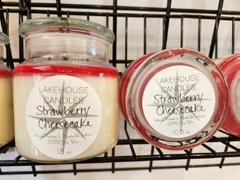
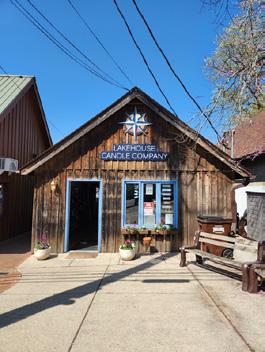

Map/Directions:

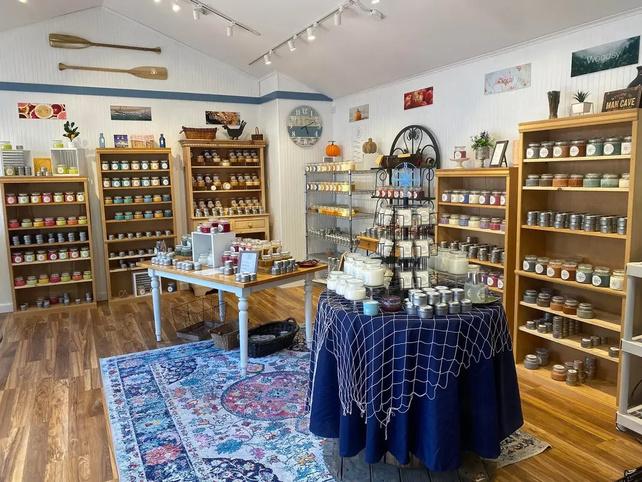
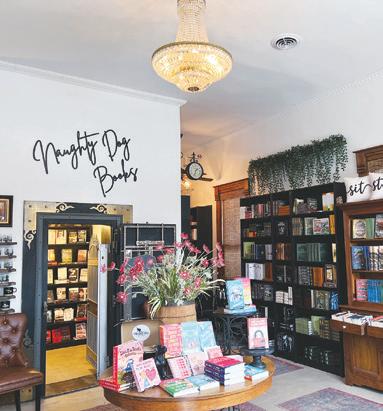
LOCATED IN THE HISTORIC STATE BANK BUILDING
76 1/2 East Main Street
Nashville, Indiana
www.naughtydogbooks.com
Follow us on Facebook & Instagram
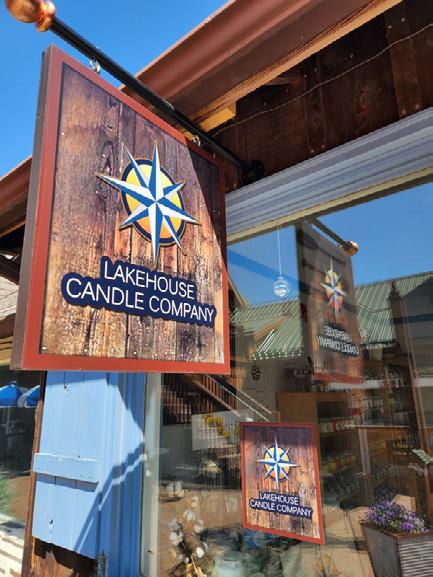
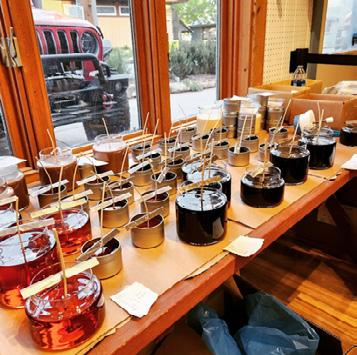





Specializing in new books, classic literature, and bookish gif ts for every reader

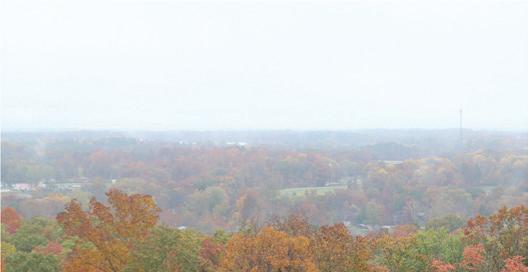


















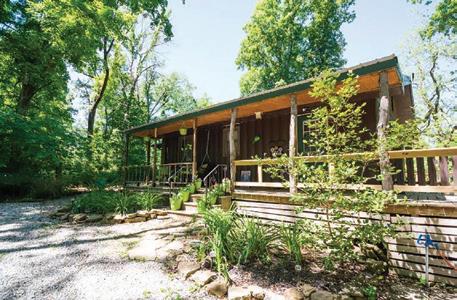


















Most folks who have been in Brown County for a while probably remember the Log Cabin Tour, a self-guided driving tour visiting beautiful log cabin homes.
Others might remember sitting on Santa’s lap at the Santa House in the 1970s.
Even more people count on ordering their spring bedding plants from someone who calls herself a “Psi Ote” knowing part of their purchase will go back into the community.
For the past 58 years, the women of the Brown County chapter of Psi Iota Xi have been working to host events that provide thousands of dollars to the Brown County community. Their focus is to fund projects involving speech and hearing, art, music, and literacy.
In 1966, 22 Brown County women founded Eta Alpha chapter of Psi Iota Xi as part of a national philanthropic sorority whose mission, according to its website, is to foster “personal growth by enriching the lives of others through philanthropic enterprises.”
Tammy Galm joined Psi Otes in 1970. Her earliest memories are of working at the Corner Closet, a thrift
store the group operated from the back of the Village Green Building from 1968 to 1977.
“I looked forward to Psi Ote events because I felt good about what we were doing in the community,” Galm said. It was through her collaborations with other Psi Otes and the many celebrations that she developed meaningful, lifelong friendships.
From 1973-1982, Psi Ote members dressed as Santa’s elves and transformed homes into the Santa House each Christmas.
From 1991-2008, Psi Otes sponsored a popular Fifties and Sixties Dance where costumes of the era were encouraged.
More recently, from 2014-2017, the group sponsored a Komedy Spelling Bea and Chili Cook-Off which brought the community together for cooking, fundraising, and laughter during the dreary month of January.
A reliable source of fundraising for all 58 years has been selling flowers for Brown County gardens. This year the group sold over $12,000 in spring flowers to be delivered the first week of May.
It was the Log Cabin Tour that made Psi Otes wellknown in the community and where the group had the most success in fundraising. The first tour in 1974 included eight homes for a two-dollar donation. Over the 36 years that the group put on the tour, about 200 homeowners opened their homes allowing as many as 2,000 visitors per weekend to see what log cabin life is like in the hills o’ Brown.
Recently, Brown County Psi Otes have averaged donations to the local community of over $9,000 each year, according to Psi Ote Treasurer Jill Wray. “In addition to donations to groups like Interact, BETA, and the Brown County Playhouse, we’ve also been able to sponsor $5,600 per year for college scholarships to Brown County High School seniors.”
Mary Kilgore has been an active Psi Ote member for over 30 years. She feels that the most significant contribution the group makes is to music and drama programs at Brown County Schools. In 1991, Kilgore helped start the Fifties and Sixties Dance to raise funds to purchase a grand piano, and, later, acoustical tiles, for the newly built high school auditorium. Other contributions to Brown County Schools performing arts include band uniforms, musical instruments, and student tickets to the Bloomington and Indianapolis Symphonies.
“Research has shown that skills taught and reinforced via the arts are crucial to language, reading comprehension, and math skills,” according to Kilgore. “Our support of the performing arts is crucial to children’s development.”
Preserving local art is an important part of the mission of Psi Otes. Its support to the Brown County Art Gallery, Brown County Art Guild, Hoosier Salon, and Indiana Heritage Arts is long-standing. In 1972, member Barbara Judd wrote and published “Brown County Art and Artists” to help preserve the history of the artist colony. In 1994, Psi Otes created plaques to permanently identify the homes of these Brown County artists.
In 1983, Psi Otes purchased a traveling exhibit of Frank Hohenberger prints to accompany the book If You Don’t Outdie Me. Those images were framed and are on display today at the lower level of the Brown County Public Library.
Psi Otes have long supported literacy in Brown County. The group donated dictionaries to every third and fourth grader for many years, funded the local Reading is Fundamental program, and donated thousands of dollars to purchase children’s books and supplies for Head Start, Kindergarten Round-Up and the Brown County Public Library children’s section.
Psi Otes helped establish the first speech and hearing specialist position at Brown County Schools and purchased the schools’ first audiometers. The chapter continues to provide financial assistance to families who need speech and hearing devices, therapy, or surgery for cochlear implants.
Last year, the 25 active members of Psi Otes began supporting musical arts for an older population. Local musician Kara Barnard created the innovative Silver Strings program for just that purpose. Barnard and her team design and build specially adapted dulcimer instruments and picks so that nursing home residents can play them easily from a wheelchair. Barnard also writes the instructional book and shows staff how to teach the residents. Silver Strings is available throughout Indiana and Brown County’s chapter provided the funds for this program to be available locally. Their hope is that it will become a project for the state Psi Iota Xi organization, sharing a bit of Brown County’s musical legacy with others.
If you are interested in learning more about the Brown County Psi Iota Xi chapter, contact Amy Oliver <huffmanoliver@gmail.com>.

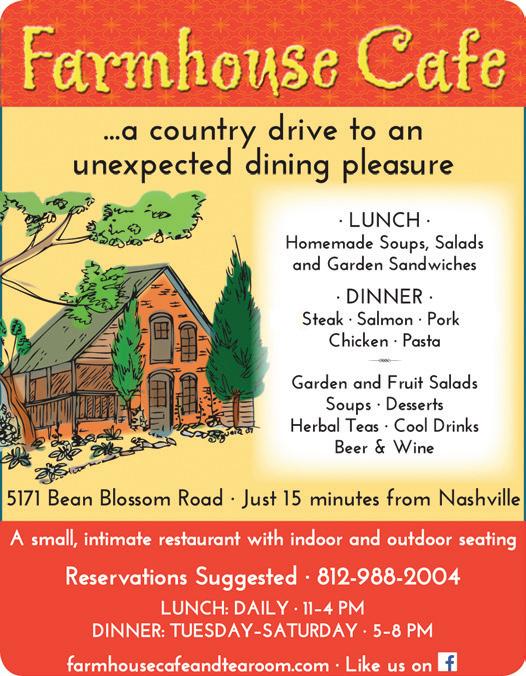
















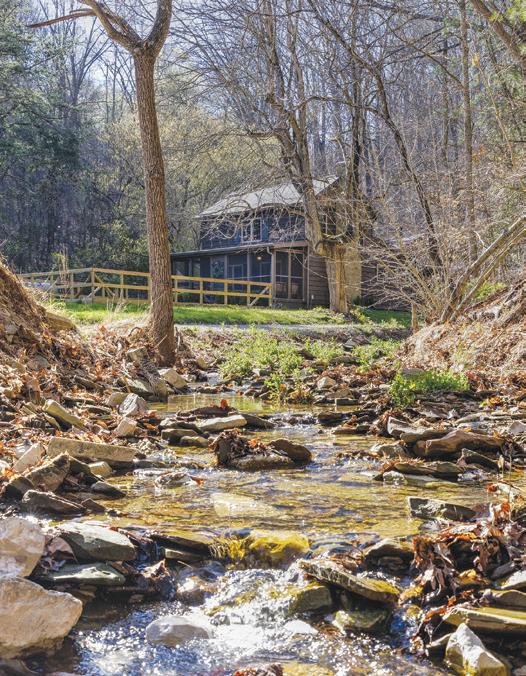
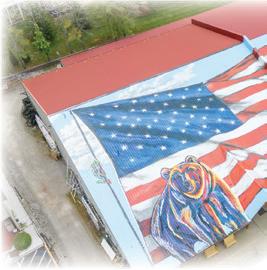



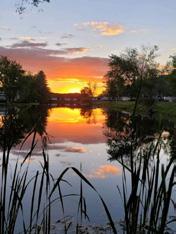

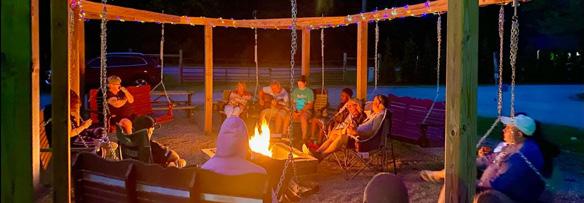

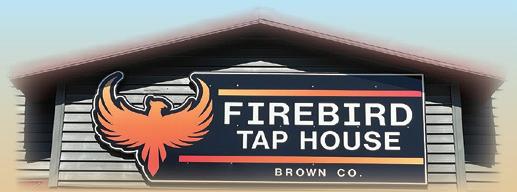





ill Monroe’s Music Park and Campground will host local and national stars this spring as two popular multiday festivals make their return for 2024.
The Third Annual Americana Bean Jamboree, from May 30 to June 1, will include headliner Jordan Rainer, from Nashville, Tennessee, a finalist of last season’s The Voice. Rainer competed on the team of country music superstar Reba McEntire.
Grammy nominee and International Bluegrass Music Association award winner Tina Adair and her band will close out Friday night’s show, while Rainer will headline Saturday.
Other artists who will play on the main stage during the jamboree include Liam Purcell and Cane Mill Road, the Bibelhauser Brothers, and the Darren Nicholson Band. Brown County musician Will Scott, who created the Hill Folk Music Series, will host an open stage jam Thursday.
Scott also booked artists for the Hippy Hill
stage performances. Talent this year is coming from Louisville, Indianapolis, and east Tennessee, as well as this area. The lineup includes Tyrone Cotton, Dietrich Gosser, Kara Cole, Benjamin Fuson & Father Kentucky, Steve Plessinger & Joe Bolinger, Feathered Mason, and Katherine Nagy Trio.
Single-day tickets cost $17 for 7 to 10 p.m. Thursday, $50 for Friday and $55 for Saturday. Gates open at 10 a.m. on Friday and Saturday. Tickets are available on the website. Guests also can rent golf carts to get around on the 55acre property, which Bill Monroe, the “father of Bluegrass” bought in 1951.
The 59th Annual Bill Monroe Bluegrass Festival this year will feature first-timers as well as artists who have never played the festival before or are returning after a long hiatus, said Melanie Wilson, publicist for the park and music events.
The lineup for the bluegrass festival, from June 12 to 15, includes Russell Moore and IIIrd Tyme Out as well as Grand Ole Opry stars Darin &


Brooke Aldridge and Kentucky Music Hall of Famer and two-time Grammy nominee Dale Ann Bradley.
Tickets for the festival can be bought online and cost between $15 and $50 per day. A four-day ticket sells for $145. Gates are open from 9 a.m. to 10 p.m.
The festival draws spectators from near and far and over the decades has been steeped in myth and legend.
There’s the ever-present legend of Bill Monroe himself, “the Father of Bluegrass,” who founded the longest running bluegrass festival in 1967. He purchased the popular Brown County Jamboree in the early 1950s, which had been operating in some form since about 1939, beginning in a big tent and later expanding into a barn structure. The 1967 festival was held at the old barn and during the following year, Bill’s Bluegrass Boys helped clear the land and erect a stage in an amphitheater for the park’s first outdoor festival. The festivals included picking contests, square dancing, and jam sessions. Those jam sessions continue to this day, and Wilson encouraged attendees to bring their instruments.
She said people also should bring their favorite lawn chair and proper attire for sunshine, rain, and cool evenings.
The park, along State Road 135, about a 10-minute drive north of Nashville and about an hour’s drive south of Indianapolis, also offers recreational vehicle and tent camping. The park has 250 campsites and 14 cabins. The park also features a 5-acre catch-andrelease fishing lake.
Monroe, whom former President Bill Clinton called an “American legend,” died in 1996. Dwight Dillman bought the park in 1998. The park is now being run by the Voils family.
Wilson said campers and attendees this year can enjoy some new amenities, such as a disc golf course, corn hole, and horseshoes.
It now features a restroom/shower house that is open 24 hours a day, upgraded cabins, a renovated main stage, a renovated museum, and a Wi-Fi Café.
People who have questions can contact the office via email, <info@billmonroemusicpark.com>, or phone, 812-988-6422 and can visit the website <billmonroemusicpark.com>.









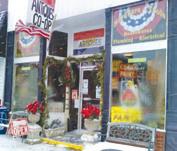



























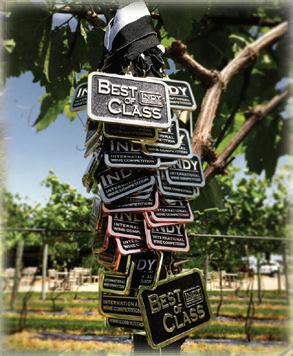

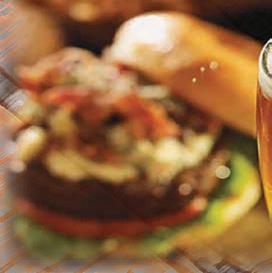
















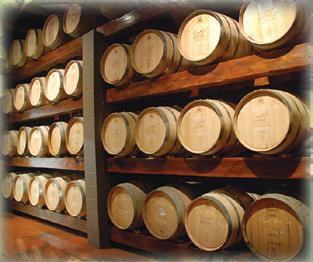

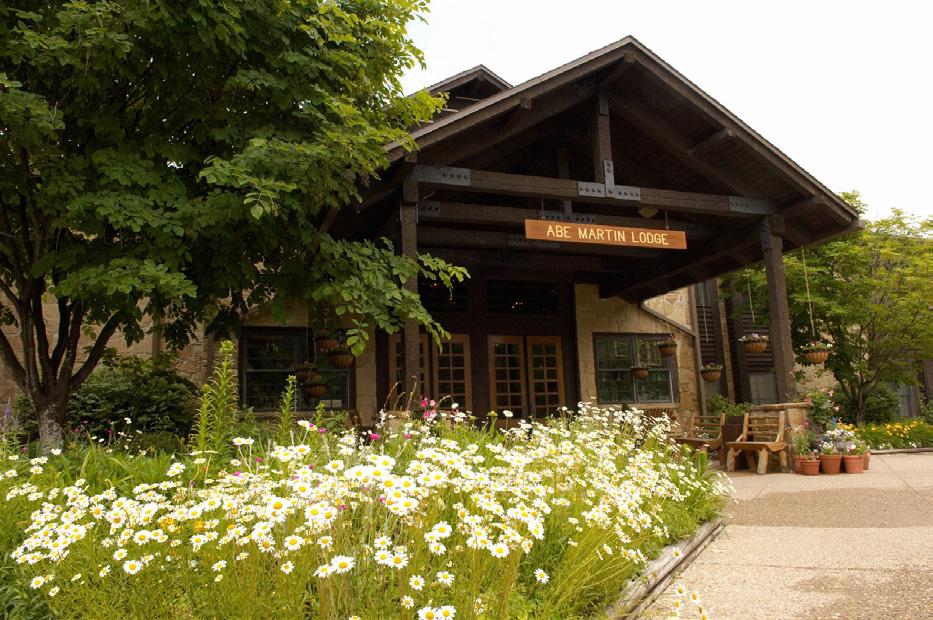

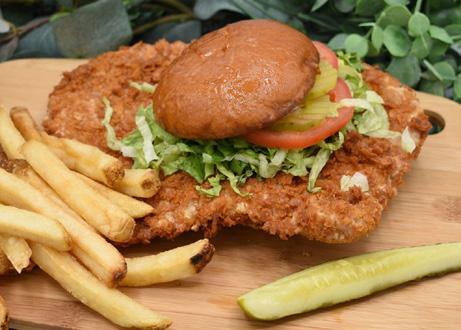



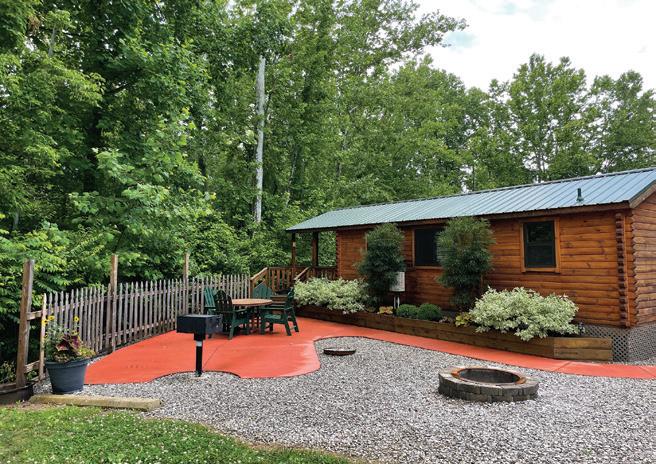








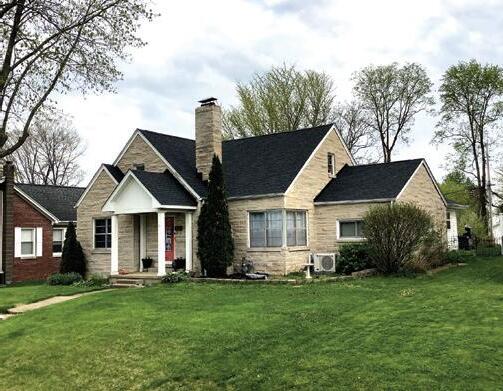





 ~by Julia Pearson
~by Julia Pearson
The first camp in Brown County opened in 1924 on the ridge known as Town Hill just southeast of Nashville—and it was for girls. The summer camp movement, in its infancy in the United States at this time, provided an experience in natural surroundings for many youngsters to thrive and transform in body, mind, and soul.
Hilltop Camp was the vision of its founder and administrator, Kate Andrews. Spending her early years in Seymour, she returned to Indiana after graduating from Wellesley College, doing graduate work at Chicago and Columbia Universities, and traveling in Europe. An accomplished educational administrator, she taught at multiple Indiana high schools and seven years at Western College in Oxford, Ohio. She was the principal at Seymour High School for 15 years, followed by a nineyear tenure as Dean of Women at Hanover. Andrews visited Brown County and built the “Valley View” cabin for her own use in 1916.
With certified teachers on staff, the Hilltop Camp and Summer School for Girls was accredited by the state board of education, thus providing advanced and remedial academic offerings for its attenders. Seven girls attended that first year. The three Nashville girls went home at night, while the others stayed in log cabins.
Cabins were built by Brown County homesteaders in the 1800s from Weed Patch Hill and the Helmsburg area. They were dismantled and reassembled on the hilltop. Four cabins were eventually increased to ten cabins, each identified by name: Skyline, Bluebird, Wren, Lookout, Rush, Hoot Owl, Chipmunk, Pee Wee, Wood Thrush, and Whippoorwill. Seven were designated for the girls, with a dining room, and two cabins for the director and staff.
The number of campers increased to around 100 girls, ages 6–18 years, from Illinois, Iowa, Kentucky, Ohio, Nebraska, Missouri, Florida, and all parts of Indiana. With the passage of years, the facilities expanded to include an outdoor theater, tennis courts, swings and see-saws, and trails.
There were two four-week sessions that lasted for two full months, going from mid-June to mid-August. Through 1941, fees were $135 for a full season and $75 for one term. Fees were later increased to $150 for two terms and $85 for one term. Days began at 6:30 a.m. and depending on

age, bedtime was 8:00 or 9:00 pm. The program was comprehensive, with tutoring by licensed teachers in Latin, English, math, and history. There were classes in music, drama, art, and physical education. Morning art classes had girls learning to make hooked rugs, weaving, basketry, sketching, pottery, and leatherworking. Pottery was fired by Walter Griffiths of the Brown County Pottery.
At the close of each session, the public was invited along with family and friends of the campers to an exhibit of the girls’ creations. A celebratory tea was provided, with a dramatic presentation from
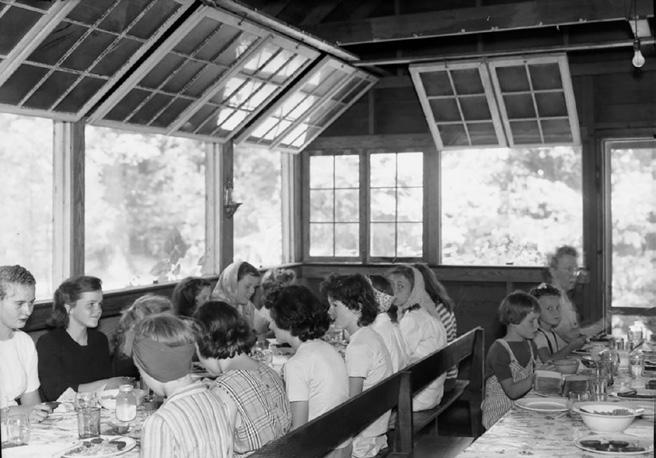
Booth Tarkington, Louise May Alcott, and selections from Shakespeare.
With staging, costuming, props, and lighting for the productions, plays were offered on the last Saturday of each four weeks’ camp session in the amphitheater. Sometimes as many as 300-400 people attended when the plays were at the outdoor theater near the state park’s lodge.
The girls experienced trips to the Brown County State Park, Bear Wallow, and the T.C. Steele studio, plus pajama dances, skits, cabin parties, overnight campouts, horseback riding, and bridge parties at the Nashville House. The girls produced their own newspaper, Kamp Kapers.
In 1933, the camp was expanded by 80 acres of the Linke farm, so that boys could also enjoy the activities of Hilltop Camp. The
HILLTOP CAMP continued from 57
recreation area, dining room, and kitchen made use of the farmhouse, with the cooks staying in the small “Pee Wee” cabin just across the road. Food was prepared with vegetables from the camp garden. It is reported that $2,000 worth of groceries were purchased from local sources each summer to feed the hungry campers. Boys and girls of Hilltop Camp walked to a nearby swimming hole on Salt Creek in the hot afternoons before the park lodge had a swimming pool.
After her marriage to Thomas J. Weaver in 1935, Kate Andrews wintered in Chicago, returning to Brown County to administer the camp. Illness and age compelled her to withdraw her involvement with the camp and it was permanently closed in 1947.
Eventually the buildings with the surrounding property were sold for private residences.
One of the cabin’s current residents, Kara Barnard, channels the spirit of creativity, strength, and

talent that inspired the Hilltop Camp and Summer School for Girls a century ago. She is a musician and artist, sharing her music magic as a performer and teacher. She also collects and generously shared the historical tidbits contained in this story.

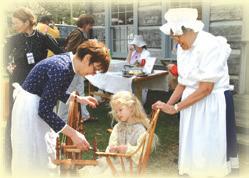
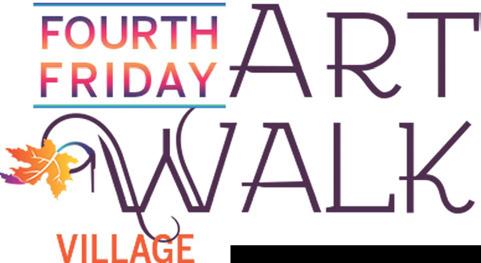

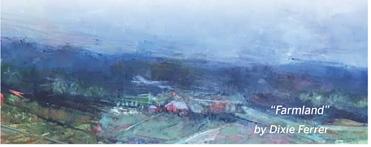

















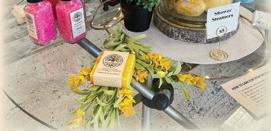




















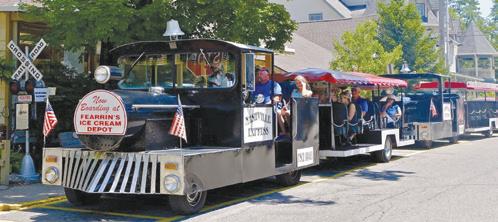
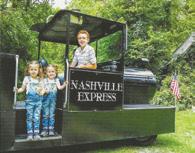






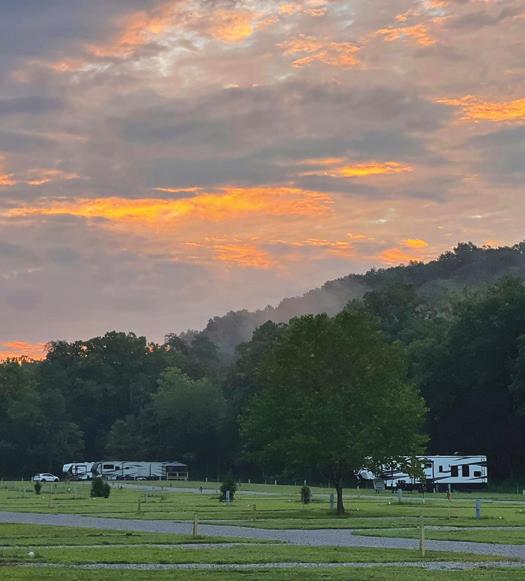
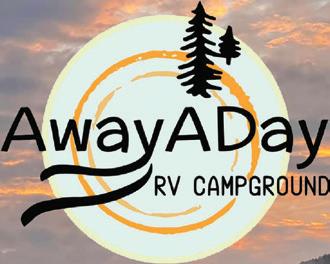


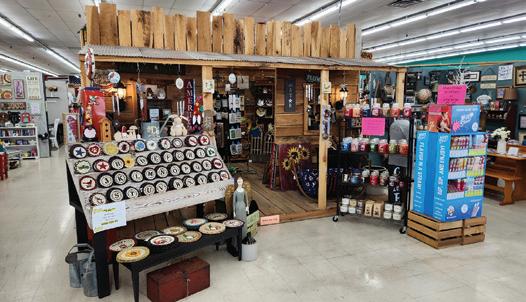







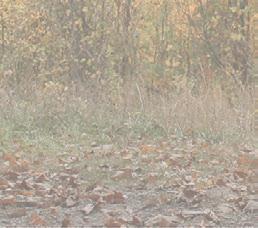

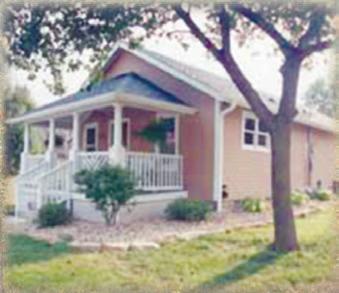













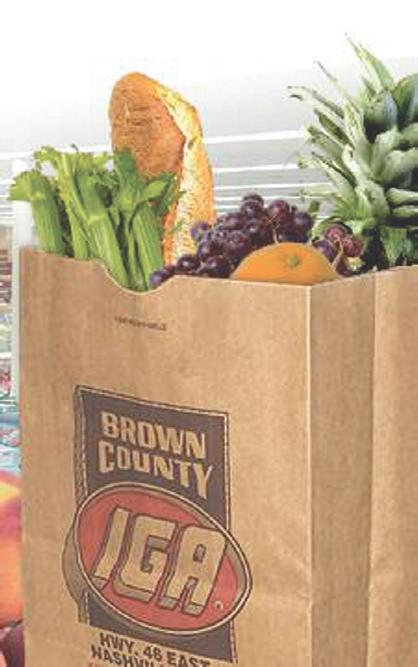




 ~by Jim Eagleman
~by Jim Eagleman
s a kid on our Pennsylvania sheep farm, I can’t recall any particular reference to a plant. The alfalfa hay fields we baled each summer, full and green with new hay, were a thing of pride for my dad, but I never thought of it as a food. To me, the crop we grew for sheep was foreign. I just remember the hard work involved. Grains for the horses and cornmeal for chickens just magically appeared. Even our big garden with luscious tomatoes and sweet corn didn’t register as things grown from soil, then fed to the family. The fields, forests, and pastures were just my green playground. In high school biology class, we looked at plant stems and leaves under a microscope and I first heard the words xylem, and phloem. Slowly we were introduced to the plant world by an energetic teacher who brought in a different plant each day. We learned plant parts, flower types, roots, and how plants made food. A by-product of this process, the very air we breathed, was important. He held the plant close to his mouth and cupped in the air around it. The gas exchange between plants and humans was one of the most fundamental relationships in nature, he explained and made sure we understood.

A college class in general botany freshman year also made an impact on me. Botany, the biology of plants, made me think of the green world in much larger terms. Plants were the basis for all life, and if I was to become a biologist, I would have a lot to learn.
“Any good biologist is also a good botanist,” I heard a professor say. Our summer at the university field station was filled with natural resource topics, field courses, and lab work. I studied local flora, plant taxonomy, and bryology (the study of mosses), while I gave my wildlife classes a more serious focus. A minor in botany helped me better understand the plant world, but it was wild animals and how they lived that captured my attention and heart.
If we were to understand a wild animal, we had to learn about its diet. We studied when food ripens; when, where, and how it is eaten; how it is stored; and how it is digested. If something in the diet is scarce, what food gets substituted? How and where are young protected? Without doubt, the vegetative community played a major role. Nests, burrows and trails, runways, and loafing areas used by animals are found in forests, fields, and fence rows. The plants they need and habitats are close by. The diversity of animals is due to food availability. When food is limited, animals move.
When we hear of the current push to remove alien plants from the environment, there may be a mixed message. Aren’t all plants important? Why remove them if they provide food and homes?
Alien plants have been introduced throughout the world and are now found in places other than where they originated.
Competing with native vegetation, they are often the first to leaf out, robustly establish themselves in broken and disturbed soils, and produce flower pollen, and later fruit or seed. But pollinator insects and birds do not find them favorable. Much time has gone into a native plant and animal relationship where originals cannot be substituted. It isn’t sustainable or healthy for either one.
My first job with the Department of Natural Resources was at Turkey Run State Park. While there I learned about glacial history. The glacier, along with meltwater, deposited seeds and seedlings of northern plants like eastern hemlock trees. Their J-shaped growth teetered out and away from the impressive sandstone cliffs. They joined Canada yew and rare orchids not normally found there.
I thought my botany knowledge needed a recharge, so I enrolled at nearby DePauw University and received a Master’s degree. Field trips allowed me to experience these unique plant communities with my classmates. And my plant journey continued.
A faculty advisor reminded me a graduate thesis was due within two years of finishing and asked if I had considered any plant research. Working then at Brown County State Park and driving past those expansive vistas made me wonder how and why the park’s forest had been cleared. The young stand of hardwoods, mixed and still recovering, wasn’t near 100 years of growth, compared to Turkey Run’s virgin tracts of 650-700 years old. “There’s your thesis,” he said. He suggested researching where the Brown County timber went.
It’s hard to imagine the park’s 16,000 acres were cleared, but timber removal had already started by the early 1800s. Farmers used local timber crews and those traveling through southern Indiana to cut and drag trees into the bottoms. Log heaps were set ablaze and burned for weeks. Plowing was done in and around tree stumps, and sometimes not always following the contour. Erosion took its toll on the hilly, thin forest soils, and a destitute citizenry struggled for livelihood.
Brown County’s hilly terrain reminds me of my Pennsylvania start. There, sheep trails curved over pastured hills and into ravines where the trees grew. Plants of my childhood had local names like sticktights and fuzzy tongue, cow’s lip, and fairy wisp. Later I learned a more academic version of the family, genus, and species. But I still like the early names.
My plant journey has been lifelong, and it continues. I’ll always be a lover of plants.








